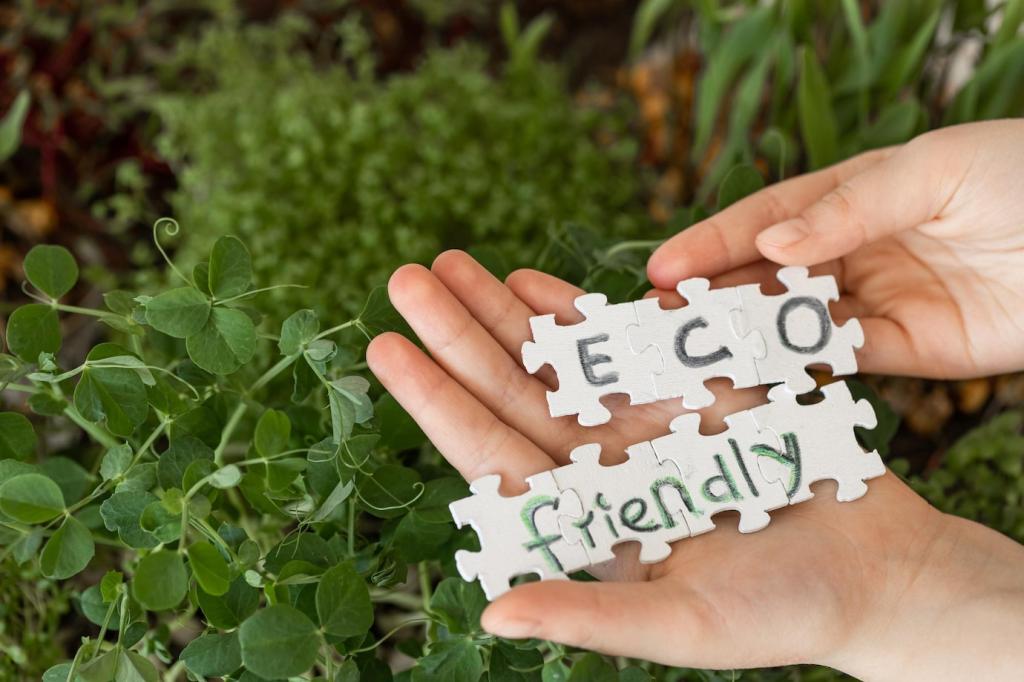Eco-Conscious landscaping and How to Describe It
Chosen theme: Eco-Conscious landscaping and How to Describe It. Welcome to a living, breathing approach to outdoor spaces where every choice—plants, water, soil, and words—reflects care for place, people, and planet.

Principles in Plain Language
Start with three anchors: protect biodiversity, conserve resources, reduce waste. Describe outcomes people can feel—cooler shade, quieter corners, seasonal color—before mentioning techniques, certifications, or impressive Latin names.
Describing Living Systems
Swap mechanical metaphors for ecological ones. Instead of ‘installing features,’ try ‘connecting habitats.’ Replace ‘low-maintenance’ with ‘self-sustaining,’ and show how roots, rain, and microbes keep the garden humming without constant intervention.
A Backyard Turning Point
When my neighbor Alma replaced her patchy lawn with natives, she described the first goldfinch as a ‘thank-you note.’ That simple phrase invited skeptical friends to ask questions, then plant seeds.

Water Wisdom: Rain, Flow, and Words That Respect Every Drop
Rain Gardens That Read Like Maps
Explain inflow, pooling, and percolation like a short journey. Use verbs—slow, spread, sink—not nouns alone. People remember pathways, especially when a painted curb arrow shows rain’s new destination.
Xeriscape Without the Stereotypes
Describe resilience beyond rocks and cacti. Mention mulch that shades soil, deep roots that share moisture, and seasonal blooms that thrive with less irrigation yet attract bees, butterflies, and curious passersby.
The First Storm After Installation
During one thunderous night, the swale swallowed a sheet of street runoff. The next morning, a neighbor said the sidewalk ‘smelled like rain,’ not bleach. Words changed minds, quickly.


Soil Health: Compost, Microbes, and Descriptions with Depth
Try this line: ‘The garden’s pantry is underground.’ Describe fungi as delivery routes, roots as customers, and organic matter as currency cycling through hands that never stop working, even while we sleep.
Soil Health: Compost, Microbes, and Descriptions with Depth
Tell the banana peel’s journey from breakfast to bed for soil life. Measuring volume helps, but the smell of earth after rain will convince almost anyone to start.
Materials with a Past: Hardscapes, Footprints, and Honest Language
Explain that pavers on open joints don’t just look refined; they breathe. Describe rain disappearing underfoot, warmer days moderated, and tree roots relieved from suffocating compaction near gathering spots.
Materials with a Past: Hardscapes, Footprints, and Honest Language
Name where the wood lived before—warehouse rafter, orchard ladder, river pier—and invite readers to imagine its previous mornings. That narrative makes maintenance meaningful and replacement choices more carefully considered.


Frame reduced mowing as a gift of time and habitat. Describe spring crescents of unmown clover, summer seedheads swaying, and autumn pathways mowed thoughtfully for play, pets, and wheelchairs.

When you say ‘electric,’ also say ‘quieter naps’ and ‘clearer birdsong.’ People connect benefits to senses. Share your switch timetable and costs, then ask readers for tips on battery longevity.

Describe leaves as blankets, not messes. Point to overwintering butterflies, soil moisture saved, and carbon kept local. Invite readers to try a ‘leave the leaves’ zone and report back.
Measuring Impact and Inviting Others In
List today’s conditions—shade hours, irrigation minutes, species count—then revisit quarterly. When storytelling includes numbers, skeptics lean in. Share templates, and encourage subscribers to post first measurements in the comments.
Measuring Impact and Inviting Others In
Translate ‘evapotranspiration’ into ‘how fast plants drink and breathe.’ Show cooler pavers, louder birds, and clearer gutters. Pair graphs with a personal scene readers can picture, then invite gentle questions.


